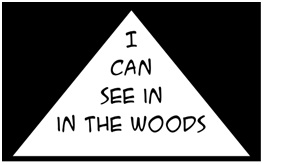 The first step of the scientific method is observation. In my opinion, this is the most important and enjoyable part of the scientific method. Observation is the skill of “seeing” things that are there, “seeing” things that aren’t there and “seeing” things that should be there.
The first step of the scientific method is observation. In my opinion, this is the most important and enjoyable part of the scientific method. Observation is the skill of “seeing” things that are there, “seeing” things that aren’t there and “seeing” things that should be there.
Observation is the skill that separates scientists from super scientists. Einstein, Galileo and Newton, for example, were fantastic observers. They were able to “see” beyond and through what other people were able to “see” before them in order to get to deeper truths inside science.
I’m putting “see” in quotes because there’s more to observing then just seeing with your eyes. First, you need to detect something. You can use your eyes, ears and nose to detect things. You can also use instruments like telescopes, microscopes or prisms to detect things. Somehow, something needs to come to your attention.
But that’s not all there is to observing something. Next you need to use your knowledge and your intuition, to fully observe what’s happening. When you look up into the night sky you might only see bunches of little white dots, but a trained astronomer would see stars of different magnitudes, galaxies and constellations. The astronomer’s knowledge allows her to “see” more. This is why I think observation is so much fun.
Observing allows you to know things and knowing things allows you to observe more things! You can’t help but get smarter if you spend your time observing! In this lesson, we’re going to spend time becoming better observers. Try this activity.
Please login or register to read the rest of this content.

that was funny thank you we loved it 🙂
The only copy I have is posted to the site. Can you improvise with a copier?
Is there a way to get a full size copy so we can print this and also the color pictures for the observation skills?
We had fun with this experiment but didn’t realize we could click on the image to just have that on the page – this would have made it easier to test but probably wouldn’t have altered our results.